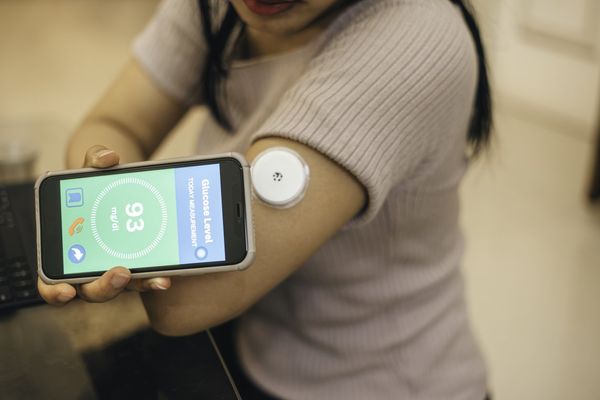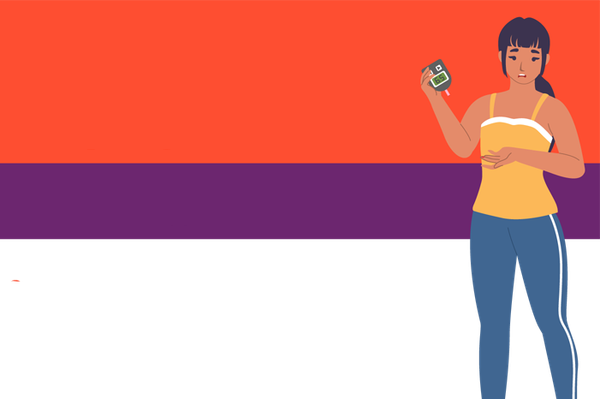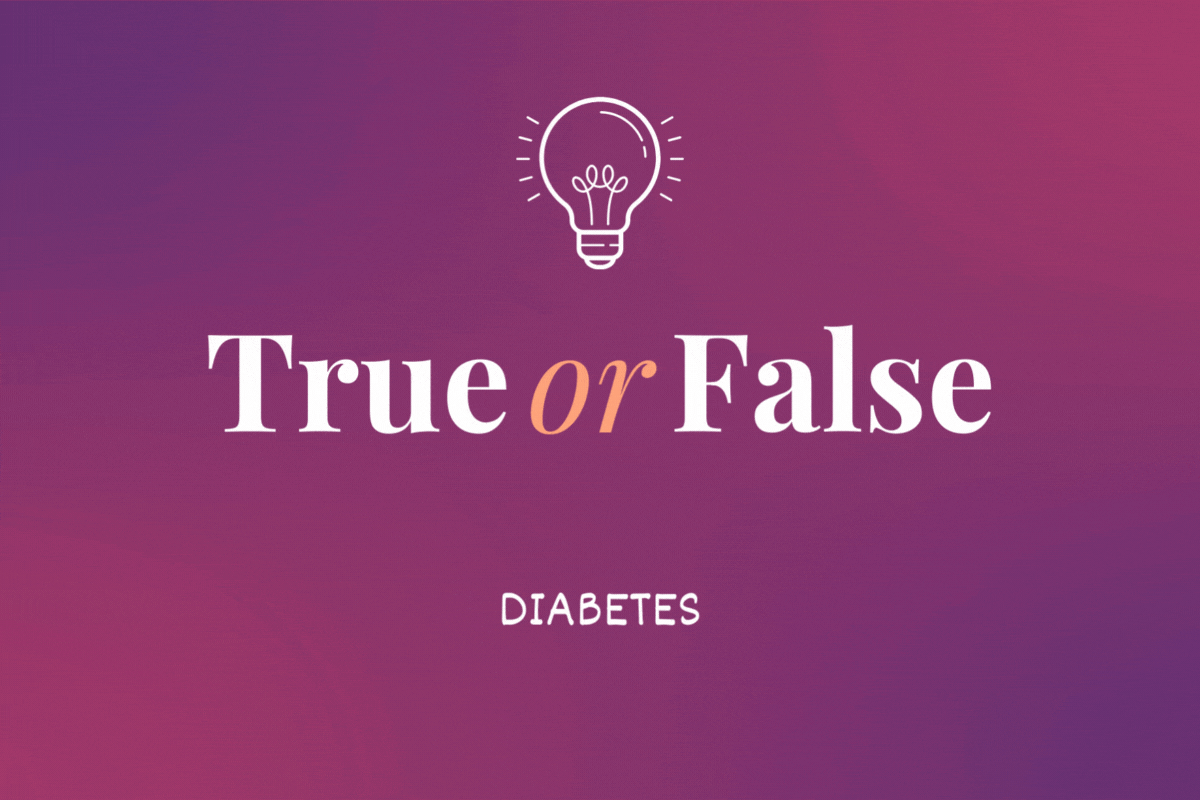At 28, Jennyvi Dizon wasn't expecting to be turned down for health insurance. "I thought I was fairly healthy," she says. The company disapproved her because she weighed 188 pounds and was 5 feet 3 inches tall. They wanted her to weigh 155 pounds or less.
When she reapplied one month later, the insurer requested blood tests. This time, the news was even more startling: her blood glucose (blood sugar) level was above normal and her cholesterol was high.
Jennyvi's mother has diabetes, so the elevated blood glucose reading was especially worrisome. Online, Jennyvi learned that her test level meant she had prediabetes—a condition that can lead to type 2 diabetes and also increases the risk of cardiovascular disease.
"I had been in a little bit of denial because, really, I was overweight and unhealthy, but I didn't realize it," says Jennyvi, a bridal and evening gown designer from Phoenix. "I knew that if I get to the diabetes level, it'll cause me problems later."
The hidden condition
As many as 60 million people in the United States have prediabetes, yet more than 90 percent of them don't know it. People with prediabetes usually have no symptoms, and many who learn about their prediabetes think it's no big deal.
"People do not take this as seriously as they need to," says Ann Albright, PhD, RD, director of the Division of Diabetes Translation at the Centers for Disease Control and Prevention in Atlanta. "The good news is there is something you can do about it," Dr. Albright adds.
The best way to fight prediabetes and get your blood sugar back in the normal range is with a coordinated plan of healthy nutrition, increased physical activity and lifestyle coping strategies that support modest weight loss if you are overweight. (Modest weight loss is defined as losing 5 to 10 percent of body weight.) Research shows that following such a plan not only reduces diabetes risk, but does it better than using medication. Improvements in glucose levels may be seen in as little as three months.
If you have prediabetes, you need to start making lifestyle changes quickly. There's a window of only about three to six years in which you can turn around elevated glucose levels, Dr. Albright says.
Know your risk
Rhonda Hurwitz had three risk factors for developing prediabetes. The Chappaqua, New York, woman had gestational diabetes during both of her pregnancies, more than 20 years ago. That put her at higher risk for prediabetes, yet the condition didn't show up until she was in her 50s and about 15 pounds overweight. By then, both her age and her weight were also risk factors.
Anyone who is overweight and 45 or older should be tested for prediabetes, advises the American Diabetes Association. If you're in that age category and of normal weight, ask your doctor if testing would be appropriate.
Younger overweight women also might need testing if they have: a family history of diabetes, high blood pressure, low HDL cholesterol and high triglycerides, had gestational diabetes or gave birth to a baby weighing more than 9 pounds. Those in ethnic groups with high risk (African American, Native American, Hispanic, Asian) also should talk with their health care providers.
"You need to know your risk status to take preventive steps," Dr. Albright says.
You'll find a simple screening test to assess your prediabetes risk by clicking here.
After preliminary screening, laboratory tests of your fasting glucose level, oral glucose tolerance level and the A1C test will establish whether you are in the prediabetes zone or not. To find out the test result numbers that indicate you have impaired glucose levels, click here.
In addition to those glucose levels, the American Diabetes Association now advises that an A1C test, which does not require fasting, be used to identify prediabetes and diabetes. An A1C range of 5.7 to 6.4 percent puts you in the prediabetes category (a diagnosis of diabetes is made when the A1C test score is 6.5 percent or higher.)
"There's a cascade of events (in your body) that starts to happen as you put on excess pounds. You disturb the body's normal means for keeping glucose in control," says Hope Warshaw, MMSc, RD, CDE, a nutritionist and author of Diabetes Meal Planning Made Easy (American Diabetes Association, 4th ed., 2010) and other books on diabetes.
When first told that you have prediabetes, Warshaw says, that's when "you can get the biggest bang for your efforts" by changing your diet and becoming more physically active.
"People have the notion that you need to lose a huge amount of weight and that is not what the research says," she notes. By losing just a modest amount through lifestyle changes, "you can reduce your glucose levels back to normal."
Taking action
Jennyvi moved quickly to beat her prediabetes by going to her doctor, a visit that also turned up a heart palpitation and high blood pressure. Yet the doctor was reassuring: lose the weight and you'll diminish or lose your health problems, he told her.
Seven months later, she's lost 30 pounds by changing her food choices and habits as well as increasing physical activity. She cut sugar and fats from her diet, eliminated midnight junk-food snacks and now joins her husband on daily walks with their energetic dog. "I don't consider it a diet. It's a life change for me," she says.
As a result, her blood sugar level has dropped well into the normal range, and she is no longer considered to be in the prediabetes range. "You get serious about it when your health is at stake," Jennyvi says.
Rhonda embarked on a plan to improve her eating and increase activity. She consulted with a nutritionist and became exercise buddies with a friend. Yet it hasn't been all smooth sailing. "The biggest thing I struggle with is my sweet tooth," she says. "How do you police yourself when you don't have any symptoms? You don't feel any different if you eat right or you don't eat right. It's just something you have to decide to do."
After losing 10 pounds, dropping at least one clothing size and seeing her A1C test results improve, Rhonda regained a bit of weight during the holidays. She's now back on track, avoiding refined, low-fiber carbohydrates such as white rice and white potatoes and eating more salads, vegetables and nuts. "I feel I've got it under control," she says.
What helps
Sheryl Lozicki, RD, MBA, a nutritionist in private practice in Grand Rapids, Michigan, suggests setting three main goals if you're at risk of prediabetes or have been diagnosed with it: eat regularly (no skipping or delaying meals); exercise for a total of 30 minutes daily; and get an average of eight hours of sleep each night. "When you short yourself on sleep, it leads to mindless eating or eating out of fatigue to perk yourself up," says Lozicki.
Choose three behaviors and commit to doing them for at least four weeks. Try these specific ideas from Lozicki, or find others elsewhere in this article:
- Drink a cup of water with meals and a cup between meals. This fills you up and helps you feel fuller faster.
- Limit 100 percent real fruit juice to a half-cup, or four ounces. Switch to whole fruit for more fiber and better nutrition.
- Forget about regular soda, imitation juice drinks, sports drinks and energy drinks.
- Switch from full-fat to low-fat or nonfat dairy.
- Increase whole grains in all foods. Switch from regular pasta to whole-grain. Have oatmeal for breakfast. Choose brown rice. All of these have complex carbohydrates, which cause a slower rise in blood sugar as well as other health benefits.
- No foods other than fresh fruit should be on your kitchen counter or in view at all.
- Keep cut-up fruits and vegetables up-front and available on the main shelf of your refrigerator.
- Write down what you eat and why. Were you hungry, angry, lonely, etc.? Know which triggers cause you to eat or overeat.
Increasing fiber in your diet helps lower blood sugar. For some great ways to add fiber, please click here.







